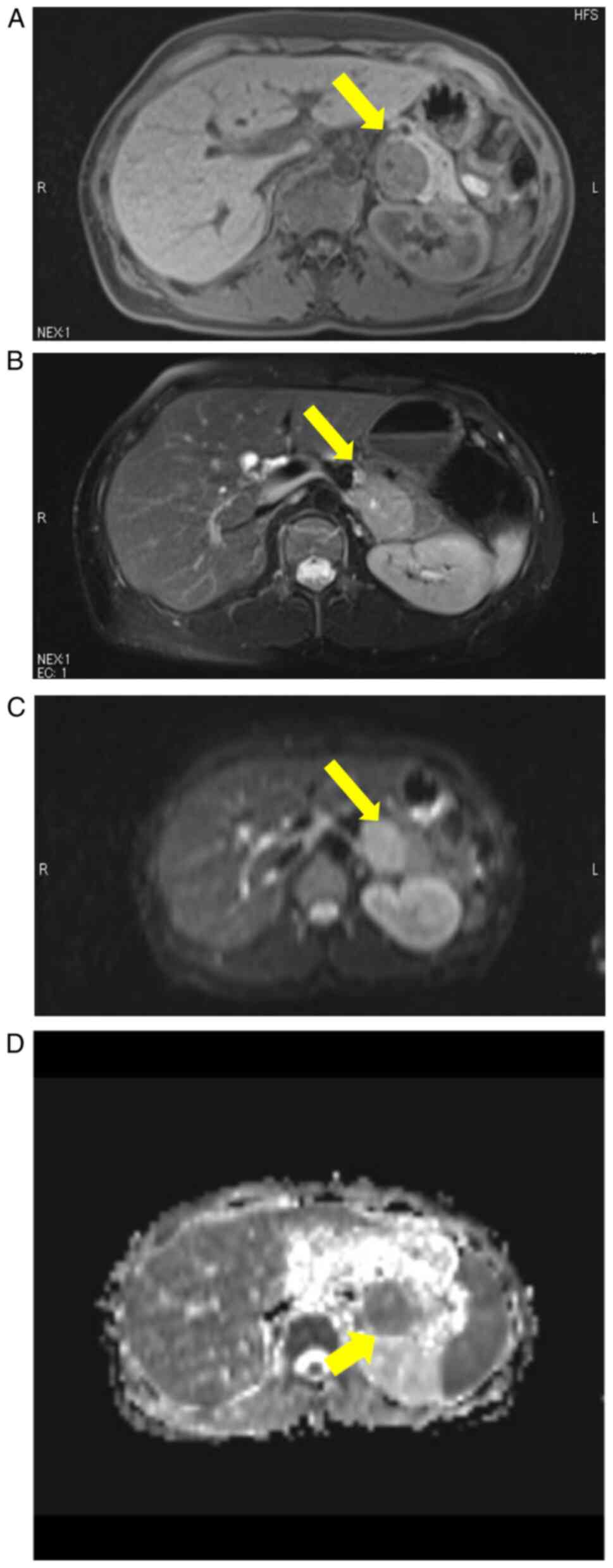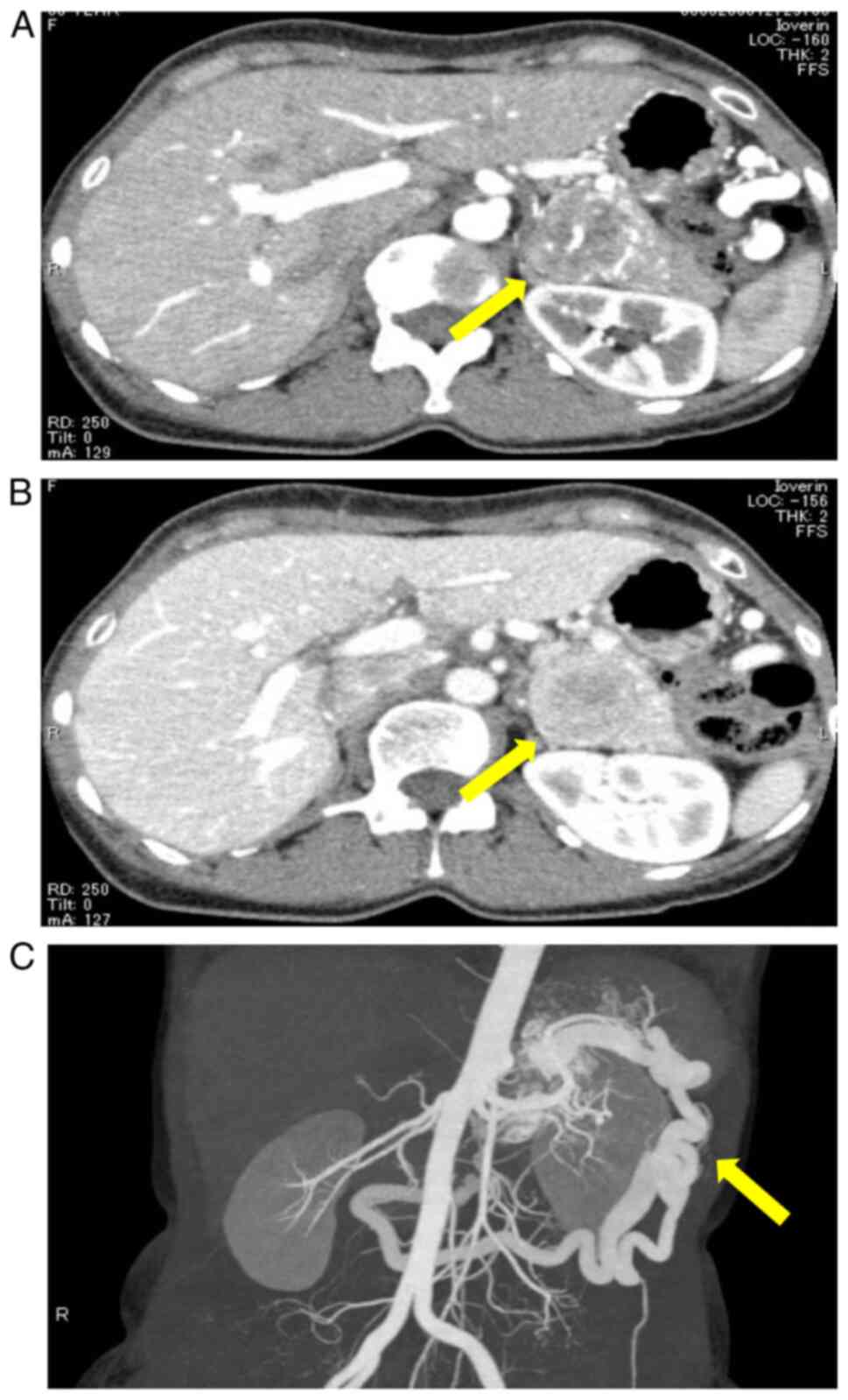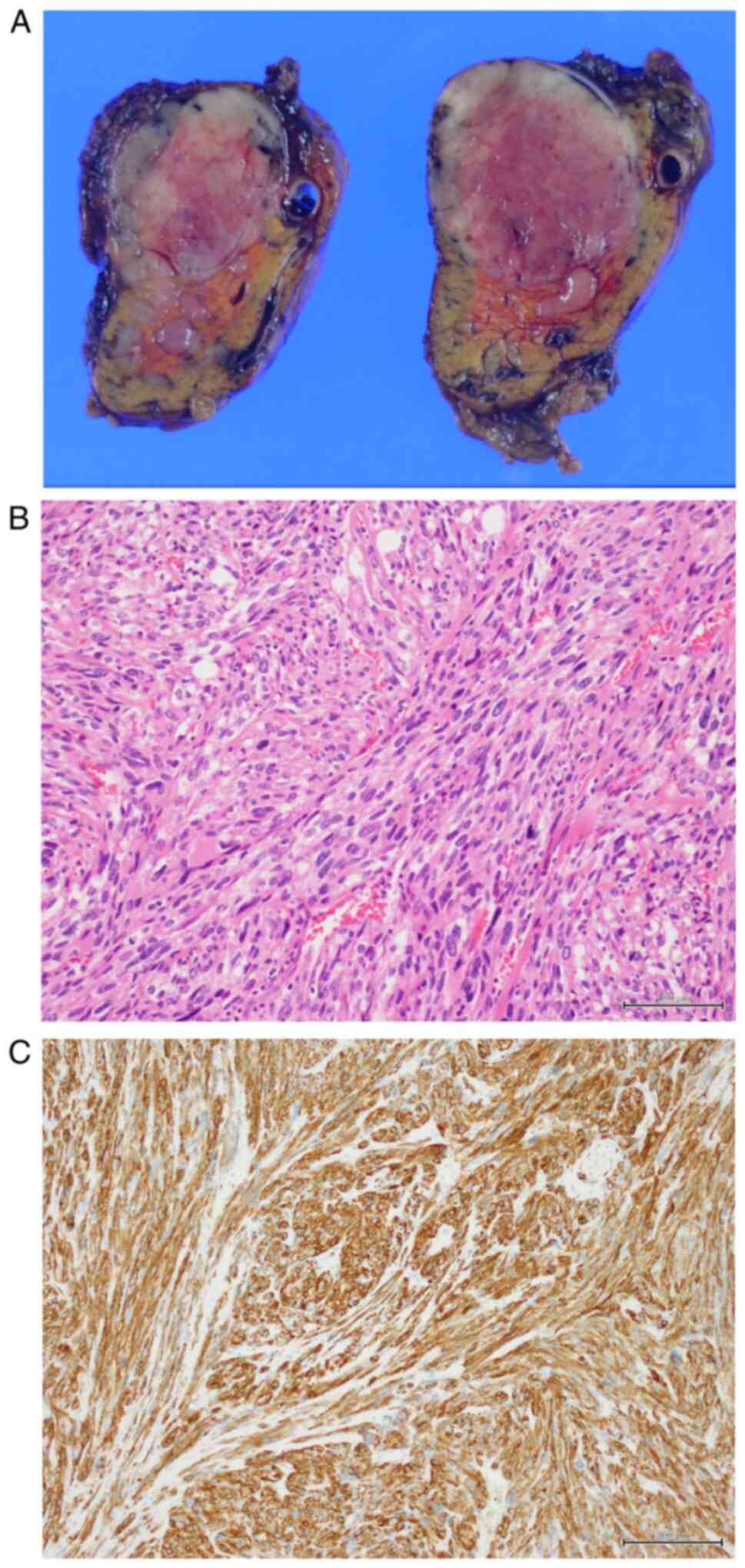|
1
|
Yang J: Primary leiomyosarcoma in the
colon: A case report. Medicine (Baltimore).
97(e9923)2018.PubMed/NCBI View Article : Google Scholar
|
|
2
|
Wile AG, Evans HL and Romsdahl MM:
Leiomyosarcoma of soft tissue: A clinicopathologic study. Cancer.
48:1022–1032. 1981.PubMed/NCBI View Article : Google Scholar
|
|
3
|
Kevorkian J and Cento DP: Leiomyosarcoma
of large arteries and veins. Surgery. 73:390–400. 1973.PubMed/NCBI
|
|
4
|
Italiano A, Toulmonde M, Stoeckle E, Kind
M, Kantor G, Coindre JM and Bui B: Clinical outcome of
leiomyosarcomas of vascular origin: Comparison with leiomyosarcomas
of other origin. Ann Oncol. 21:1915–1921. 2010.PubMed/NCBI View Article : Google Scholar
|
|
5
|
Riley DS, Barber MS, Kienle GS, Aronson
JK, von Schoen-Angerer T, Tugwell P, Kiene H, Helfand M, Altman DG,
Sox H, et al: CARE guidelines for case reports: Explanation and
elaboration document. J Clin Epidemiol. 89:218–235. 2017.PubMed/NCBI View Article : Google Scholar
|
|
6
|
Shimokihara K, Kawahara T, Kasahara R,
Kasuga J, Sugiura S, Tajiri R, Uemura H and Chiba K:
Retroperitoneal castleman's disease. Case Rep Oncol. 12:885–889.
2019.PubMed/NCBI View Article : Google Scholar
|
|
7
|
Niver BE, Megibow AJ, Faust MJ and
Rosenkrantz AB: Multidetector CT appearance of leiomyosarcoma of
the splenic vein. Clin Radiol. 66:688–690. 2011.PubMed/NCBI View Article : Google Scholar
|
|
8
|
Tilkorn DJ, Hauser J, Ring A, Goertz O,
Stricker I, Steinau HU and Kuhnen C: Leiomyosarcoma of
intravascular origin-a rare tumor entity: Clinical pathological
study of twelve cases. World J Surg Oncol. 8(103)2010.PubMed/NCBI View Article : Google Scholar
|
|
9
|
Székely E, Kulka J, Miklós I and Kaliszky
P: Leiomyosarcomas of great vessels. Pathol Oncol Res. 6:233–236.
2000.PubMed/NCBI View Article : Google Scholar
|
|
10
|
Burke AP and Virmani R: Sarcomas of the
great vessels. A clinicopathologic study. Cancer. 71:1761–1773.
1993.PubMed/NCBI View Article : Google Scholar
|
|
11
|
Aguilar C, Socola F, Donet JA, Gallastegui
N and Hernandez GA: Leiomyosarcoma of the splenic vein. Clin Med
Insights Oncol. 7:263–268. 2013.PubMed/NCBI View Article : Google Scholar
|
|
12
|
Patrono D, Molinaro L, Mazza E, Romagnoli
R and Salizzoni M: Splenic vein leiomyosarcoma: Case report and
review of the literature. JOP. 15:512–514. 2014.PubMed/NCBI View Article : Google Scholar
|
|
13
|
Gage MJ, Newman E, Maldonado TS and Hajdu
CH: Leiomyosarcoma of the splenic vein. J Vasc Surg. 55:1485–1487.
2012.PubMed/NCBI View Article : Google Scholar
|
|
14
|
Wu W, Zhao X, Wang Y, Di C, Cai R, Zhang
Y, Chen S, Zhang W and Yue X: Leiomyosarcoma of the splenic vein: A
case report. Oncol Lett. 14:977–980. 2017.PubMed/NCBI View Article : Google Scholar
|
|
15
|
Barbetakis N, Asteriou C, Papadopoulou FI
and Stergiou E: Sarcomas of the great vessels. Is there a role for
chemotherapy? Interact Cardiovasc Thorac Surg. 10:463–464.
2010.PubMed/NCBI View Article : Google Scholar
|
|
16
|
Hollenbeck ST, Grobmyer SR, Kent KC and
Brennan MF: Surgical treatment and outcomes of patients with
primary inferior vena cava leiomyosarcoma. J Am Coll Surg.
197:575–579. 2003.PubMed/NCBI View Article : Google Scholar
|
|
17
|
Hartman DS, Hayes WS, Choyke PL and
Tibbetts GP: From the archives of the AFIP. Leiomyosarcoma of the
retroperitoneum and inferior vena cava: Radiologic-pathologic
correlation. Radiographics. 12:1203–1220. 1992.PubMed/NCBI View Article : Google Scholar
|
|
18
|
Narata M, Okuhata Y, Abe K, Takemoto A,
Maebayashi T, Furuhashi S and Takahashi M: Primary leiomyosarcoma
of the inferior vena cava: Case report. Abdom Imaging. 35:481–484.
2010.PubMed/NCBI View Article : Google Scholar
|
|
19
|
Hilliard NJ, Heslin MJ and Castro CY:
Leiomyosarcoma of the inferior vena cava: Three case reports and
review of the literature. Ann Diagn Pathol. 9:259–266.
2005.PubMed/NCBI View Article : Google Scholar
|
|
20
|
Clark MA, Fisher C, Judson I and Thomas
JM: Soft-tissue sarcomas in adults. N Engl J Med. 353:701–711.
2005.PubMed/NCBI View Article : Google Scholar
|
|
21
|
Adjuvant chemotherapy for localised
resectable soft-tissue sarcoma of adults: Meta-analysis of
individual data. Sarcoma meta-analysis collaboration. Lancet.
350:1647–1654. 1997.PubMed/NCBI
|
|
22
|
Lueder GT and Smith ME: Retinoblastoma.
Semin Diagn Pathol. 11:104–106. 1994.PubMed/NCBI
|
|
23
|
Friend SH, Bernards R, Rogelj S, Weinberg
RA, Rapaport JM, Albert DM and Dryja TP: A human DNA segment with
properties of the gene that predisposes to retinoblastoma and
osteosarcoma. Nature. 323:643–646. 1986.PubMed/NCBI View
Article : Google Scholar
|

















